Embarking on your first gardening journey is an exciting adventure that brings you closer to nature and offers the joy of nurturing life. Whether you’re aiming to grow your own vegetables, cultivate vibrant flowers, or create a serene green space, this guide will walk you through the essential steps to start your first garden successfully.
Table of Contents
1. Determine Your Garden’s Purpose
Before you dig into the soil, it’s crucial to define what you want from your garden. Are you interested in growing fresh produce, creating a colorful flower bed, or perhaps establishing a herb garden? Your goals will influence every subsequent decision, from location to plant selection.
Real-Life Example: Sarah, a first-time gardener, wanted to ensure a steady supply of fresh herbs for her cooking. She decided to start a small herb garden on her apartment balcony, focusing on basil, rosemary, and thyme.
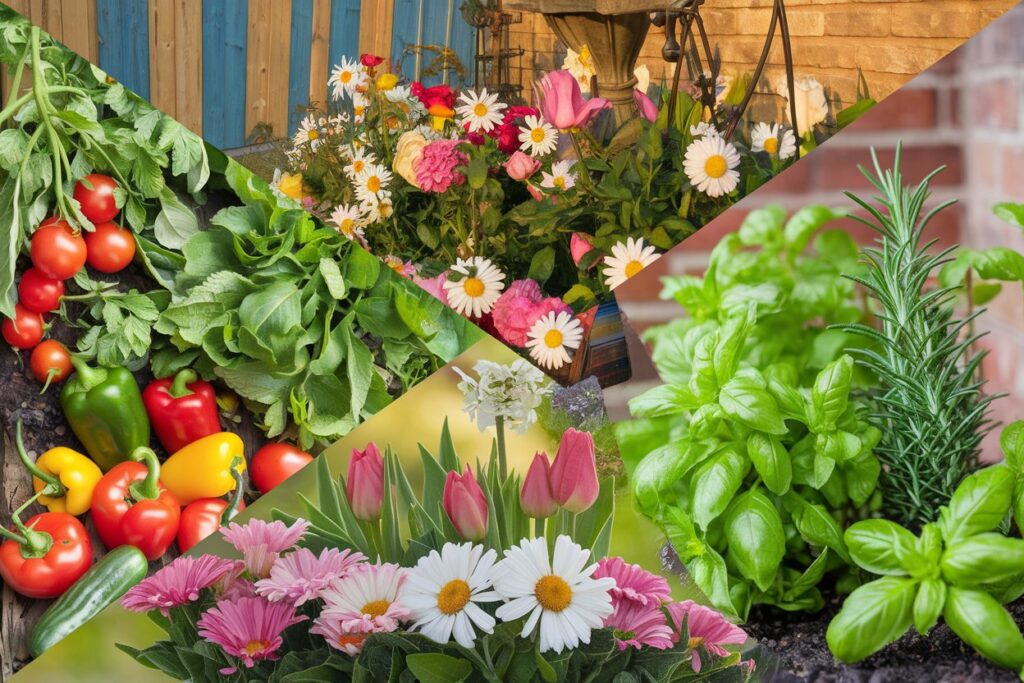
2. Choose the Right Location
Selecting the ideal spot for your garden is vital. Most plants require ample sunlight, so observe your space to identify areas that receive at least 6 hours of direct sunlight daily. Additionally, consider factors like soil drainage and proximity to a water source.
Expert Insight: According to the Family Handyman, vegetables and full-sun plants need six hours of daily sun; partial sun plants require three to six hours; and shade plants need two to three hours.
3. Decide on the Garden Type
Depending on your available space and resources, you can choose from various garden types:
- In-Ground Garden: Ideal for larger spaces; involves planting directly into the soil.
- Raised Beds: Elevated structures filled with soil; they offer better control over soil quality and are easier to manage.
- Container Gardening: Perfect for limited spaces like balconies or patios; involves growing plants in pots or other containers.
Real-Life Example: Living in an urban apartment, Mark opted for container gardening. He used repurposed wooden crates to grow tomatoes and peppers on his balcony, maximizing his limited space.
4. Test and Prepare Your Soil
Healthy soil is the foundation of a thriving garden. Conduct a soil test to determine its pH and nutrient levels. Based on the results, you may need to amend the soil with compost or other organic matter to enhance fertility and structure.
Expert Insight: The Family Handyman emphasizes the importance of testing soil and cultivating ideal conditions for chosen plants.
5. Plan Your Garden Layout
Sketch a simple plan of your garden, considering the mature size of each plant to ensure adequate spacing. Group plants with similar sunlight and water requirements together. This planning will help prevent overcrowding and promote healthy growth.
Tip: Tall plants should be placed on the northern side of the garden to prevent them from shading shorter plants.
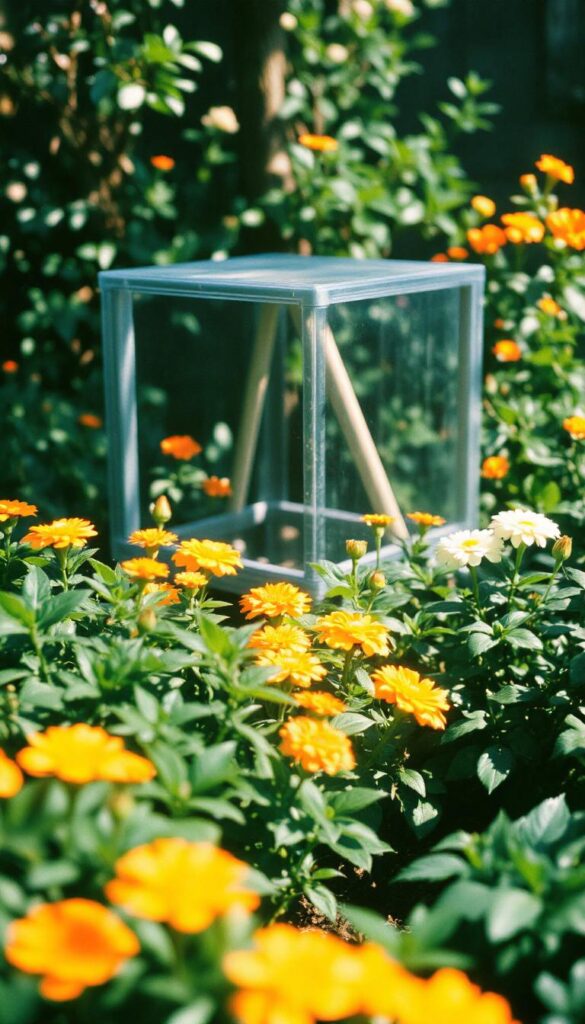
6. Select Suitable Plants
Choose plants that are well-suited to your climate, soil, and sunlight conditions. As a beginner, opt for hardy varieties that are easy to grow and maintain. Visiting a local nursery can provide insights into the best plant choices for your area.
Research-Backed Data: According to the National Gardening Association, starting with native plants can increase your chances of success, as they are adapted to the local climate and soil conditions.
7. Planting: Seeds vs. Seedlings
Decide whether to start your garden from seeds or purchase young plants (seedlings). While seeds are cost-effective and offer a wider variety, seedlings provide a head start and are less vulnerable to early challenges.
Expert Insight: Better Homes & Gardens suggests that starting seeds indoors can lead to higher germination rates and protection from pests.
8. Planting Process
Follow these steps to plant your garden:
- Prepare the Soil: Loosen the top 6 inches of soil and remove any debris.
- Dig Holes: For seedlings, dig holes slightly larger than the root ball. For seeds, follow the depth instructions on the packet.
- Place Plants: Gently place seedlings into the holes, ensuring the root ball is level with the soil surface. For seeds, sow them evenly and cover lightly with soil.
- Water Thoroughly: After planting, water the area thoroughly to help plants establish roots.
Tip: Plant labels often provide spacing guidelines; adhering to these ensures each plant has enough room to grow.
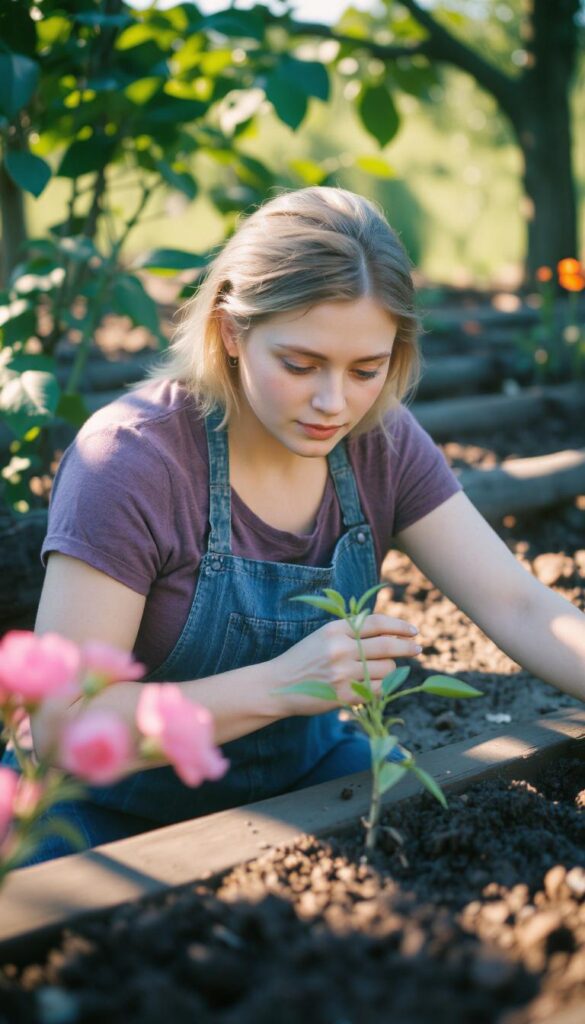
9. Mulching
Apply a layer of mulch around your plants to conserve moisture, regulate soil temperature, and suppress weed growth. Organic mulches like straw, wood chips, or compost are beneficial as they decompose and enrich the soil.
Real-Life Example: Emily used straw mulch in her vegetable garden, which helped retain soil moisture during the hot summer months and reduced her watering frequency.
10. Watering
Consistent watering is crucial, especially during the initial growth stages. Water deeply to encourage roots to grow downward. The frequency will depend on your climate and soil type, but a general rule is to provide about 1 inch of water per week.
Expert Insight: Steve Masley, a home and garden specialist, advises using a watering can or a spray attachment to your hose to water the plants. Water them from high up, so that you don’t damage any of their leaves or stalks.
11. Regular Maintenance
Keep your garden healthy by:
- Weeding: Regularly remove weeds that compete for nutrients and water.
- Pruning: Trim dead or overgrown branches to promote air circulation and growth.
- Fertilizing: Apply organic fertilizers as needed, based on your soil test results.
- Pest Control: Monitor for pests and manage them using natural methods, such as introducing beneficial insects or using organic sprays.
Tip: Keeping a garden journal to track planting dates, growth progress, and any issues can be invaluable for future planning and problem-solving.
12. Patience and Observation
Gardening is a journey that requires patience. Regularly observe your plants, note changes, and learn from the process. Celebrate small victories, like the first bloom or harvest, and don’t be discouraged by setbacks.
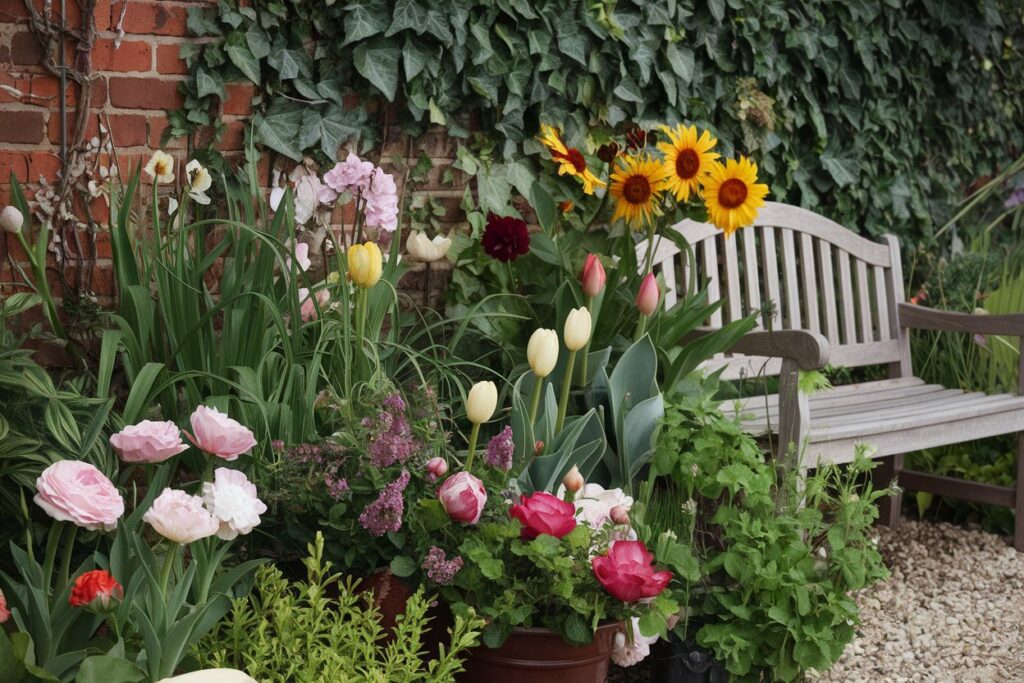
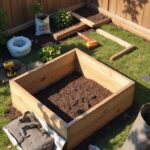
Pingback: How to Start an Indoor Garden: A Complete Beginner’s Guide - gardendiyhaven.com